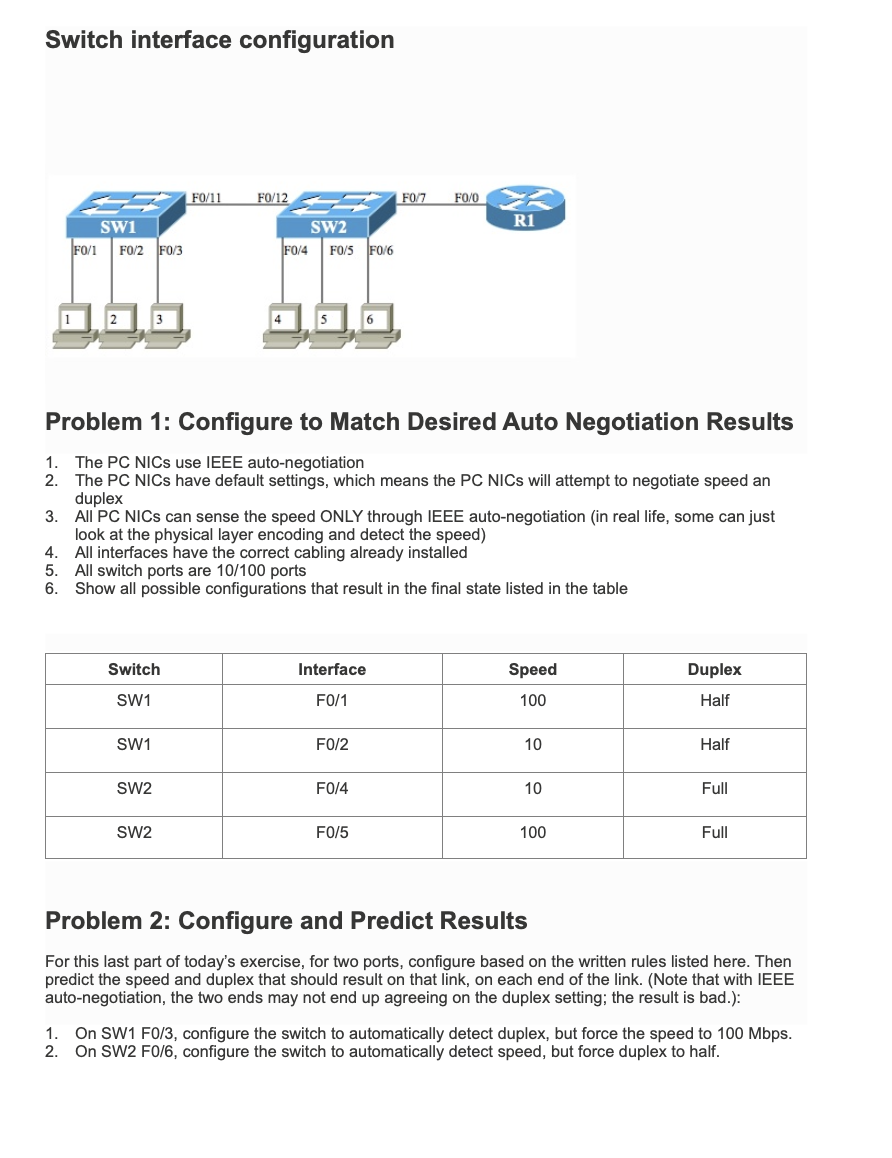Answered step by step
Verified Expert Solution
Question
1 Approved Answer
Switch interface configuration SW1 F0/1 F0/2 F0/3 12 F0/11 F0/12 SW2 FO/4 F0/5 F0/6 F0/7 F0/0 R1 Problem 1: Configure to Match Desired Auto

Switch interface configuration SW1 F0/1 F0/2 F0/3 12 F0/11 F0/12 SW2 FO/4 F0/5 F0/6 F0/7 F0/0 R1 Problem 1: Configure to Match Desired Auto Negotiation Results 1. The PC NICS use IEEE auto-negotiation 2. The PC NICs have default settings, which means the PC NICS will attempt to negotiate speed an duplex 3. All PC NICs can sense the speed ONLY through IEEE auto-negotiation (in real life, some can just look at the physical layer encoding and detect the speed) 4. All interfaces have the correct cabling already installed 5. All switch ports are 10/100 ports 6. Show all possible configurations that result in the final state listed in the table Switch Interface Speed Duplex SW1 F0/1 100 Half SW1 F0/2 10 Half SW2 F0/4 10 Full SW2 F0/5 100 Full Problem 2: Configure and Predict Results For this last part of today's exercise, for two ports, configure based on the written rules listed here. Then predict the speed and duplex that should result on that link, on each end of the link. (Note that with IEEE auto-negotiation, the two ends may not end up agreeing on the duplex setting; the result is bad.): 1. On SW1 F0/3, configure the switch to automatically detect duplex, but force the speed to 100 Mbps. 2. On SW2 F0/6, configure the switch to automatically detect speed, but force duplex to half.
Step by Step Solution
There are 3 Steps involved in it
Step: 1

Get Instant Access to Expert-Tailored Solutions
See step-by-step solutions with expert insights and AI powered tools for academic success
Step: 2

Step: 3

Ace Your Homework with AI
Get the answers you need in no time with our AI-driven, step-by-step assistance
Get Started


